EdChoice Public Opinion Tracker: Top Takeaways June 2021
Summer is well underway, and Americans are beginning to re-engage in activities—travel, social gatherings, working from the office—that were changed or canceled by the pandemic. For many families, the pandemic upended how, when and even how much their children were able to learn while schools were closed.
What will the 2021 school year bring? Will families’ desire to school at home or in a hybrid model continue? What do parents think about who should make decisions about curriculum? Do they feel their kids’ schools are welcoming and inclusive?
With this backdrop, we surveyed a nationally representative sample of Americans adults aged 18 and over (N = 2,200 American adults, in the field June 11-17) on a variety of questions regarding K-12 education, COVID-19, public institutions, and more. With additional sampling, we obtained responses from a total of 1,228 parents of school-aged children so we can report more reliable information about parent subgroups by demographic.
1. Parents remain more optimistic about the direction of K-12 education in the United States than the general public. Greater shares of public school parents say that K-12 is moving in the right direction on the local, state, and national levels than the public at large. Sixty-one percent of parents expressed optimism about education in their local school district, 20 percentage points higher than the general public. Fifty-seven percent were positive about education in their state, which exceeded that of all adults by 16 points. Forty-eight percent of parents responded positively about the direction of education nationally, 15 points more than Americans as a whole. The polling indicates that the more connected Americans are to their schools, then they are more optimistic about how things are going in K-12 education.

We observed a bump on positive sentiment from May to June. That change resembles increases we saw earlier in 2021.


2. Private school parents are more likely to see their schools promoting diversity and inclusion compared to public district school parents. We presented six statements about a given school’s respect for cultural beliefs and practices, treatment of students, accommodations, and overall social environment. A majority of all parents agreed with each of these statements, but private school parents are noticeably more likely to agree that those statements apply to their local school, particularly regarding whether the school treats students equally and whether it encourages challenging classes regardless of race or background. District and private school parents most agreed that their local school emphasized respect for students of different cultures, beliefs, and practices.
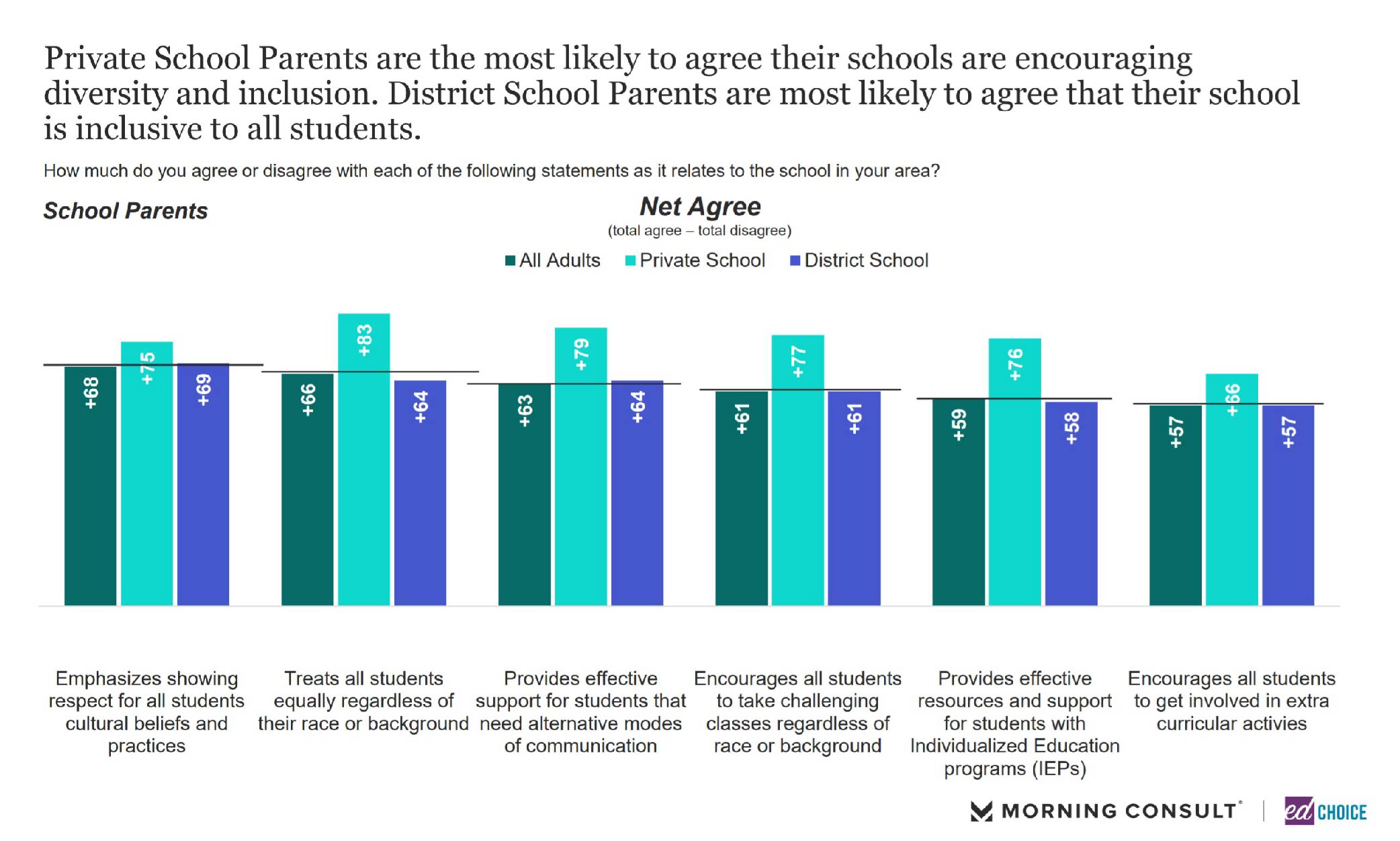
3. Americans have no clear consensus about the facts and philosophies about their schools’ curriculum. We posed six statements about curriculum development and delivery in parents’ local schools and other respondents’ about their schools. Then we asked them to rate their level of agreement with those statements on a scale of 0 to 10. The average rating for each statement fell within a point and a half of 5, suggesting there is no strong agreement among school parents or the general public. Parents agreed most strongly that all students feel welcome in their school. The general public as a whole was most likely to concur that debates about school curriculum are more intense today than they were five years ago. Parents and the public disagree most on whether their school teaches American history from a variety of perspectives.
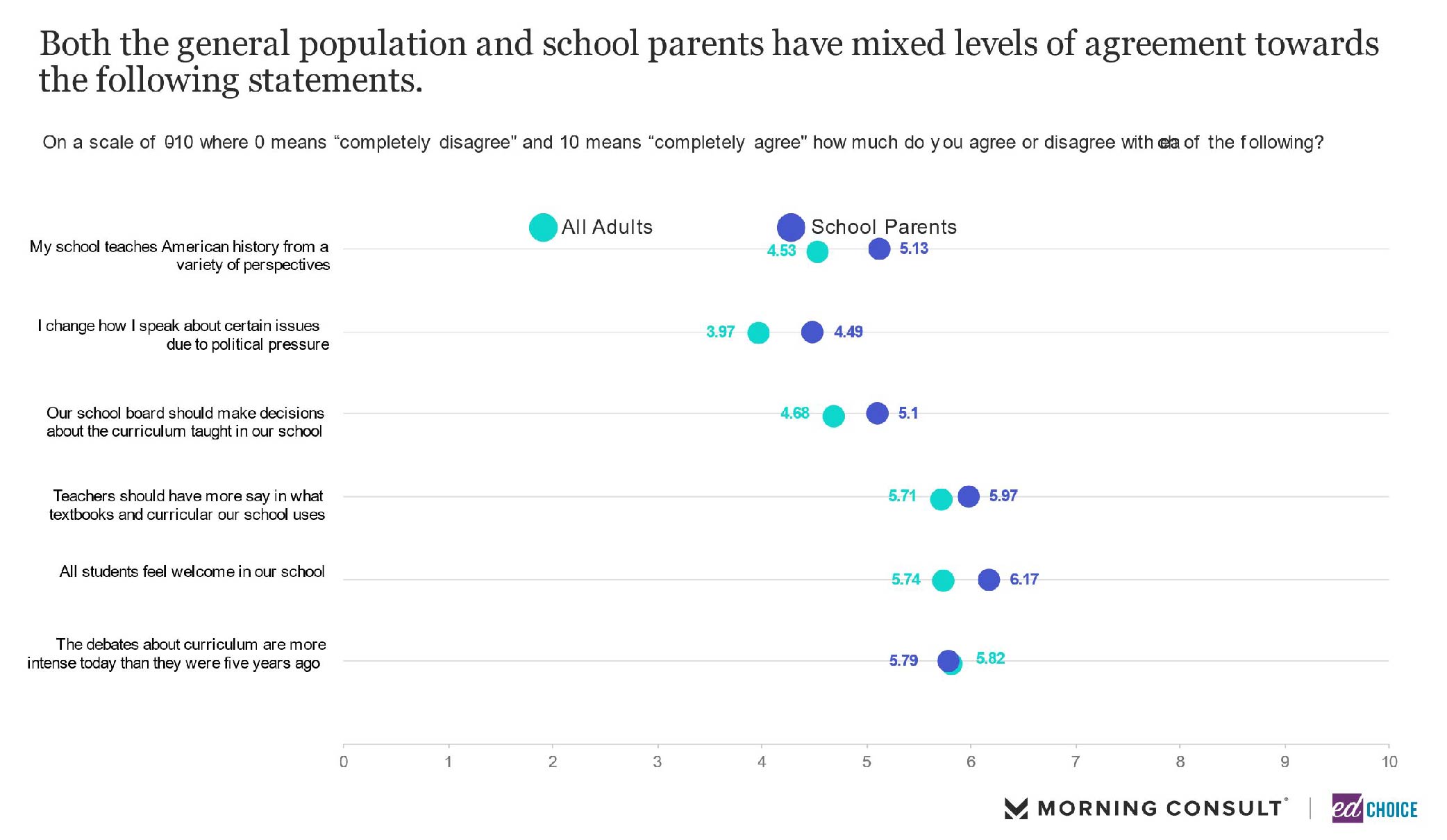
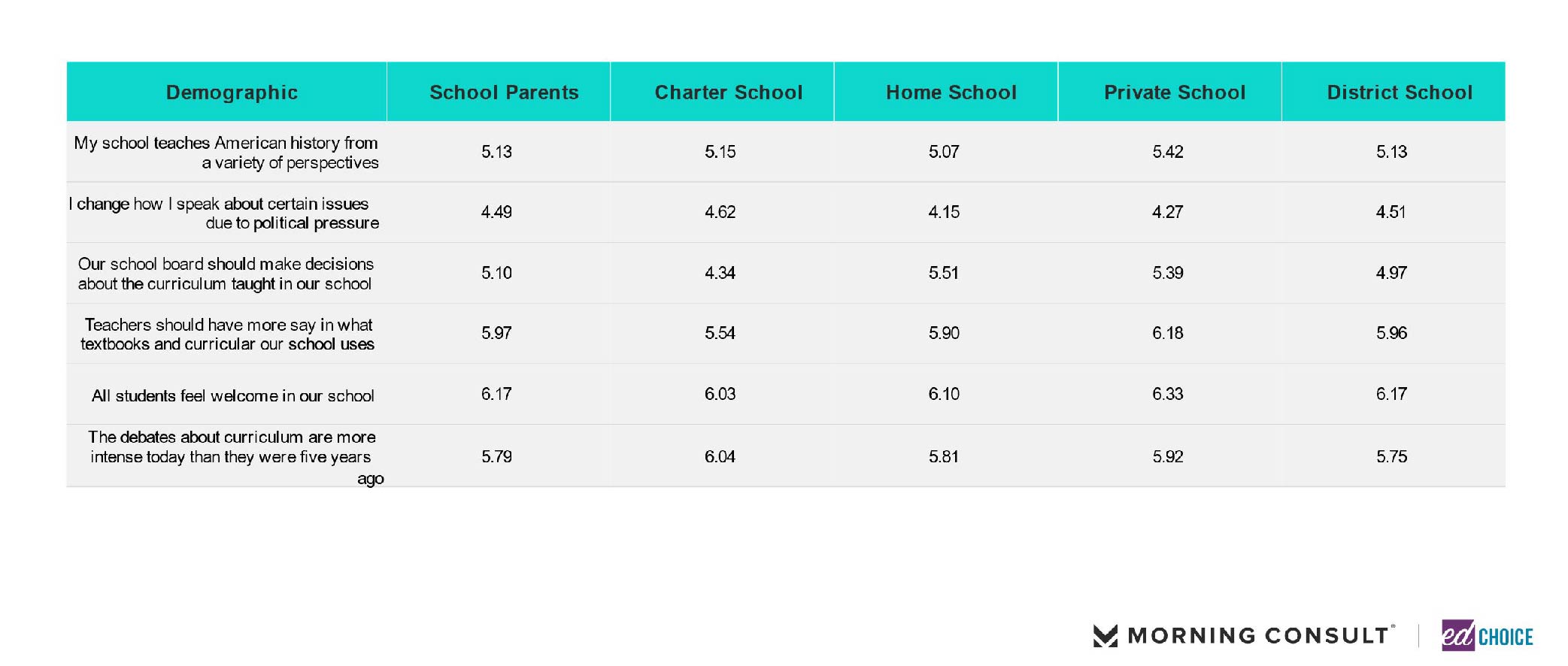
Higher-income parents are more likely to say their school teaches history from a variety of perspectives and that all students feel welcome there. Black parents are less likely than white or Hispanic parents to agree with those statements. The differences in response levels are shown below using heat-mapping: red indicates lower levels of agreement; green indicates higher levels.
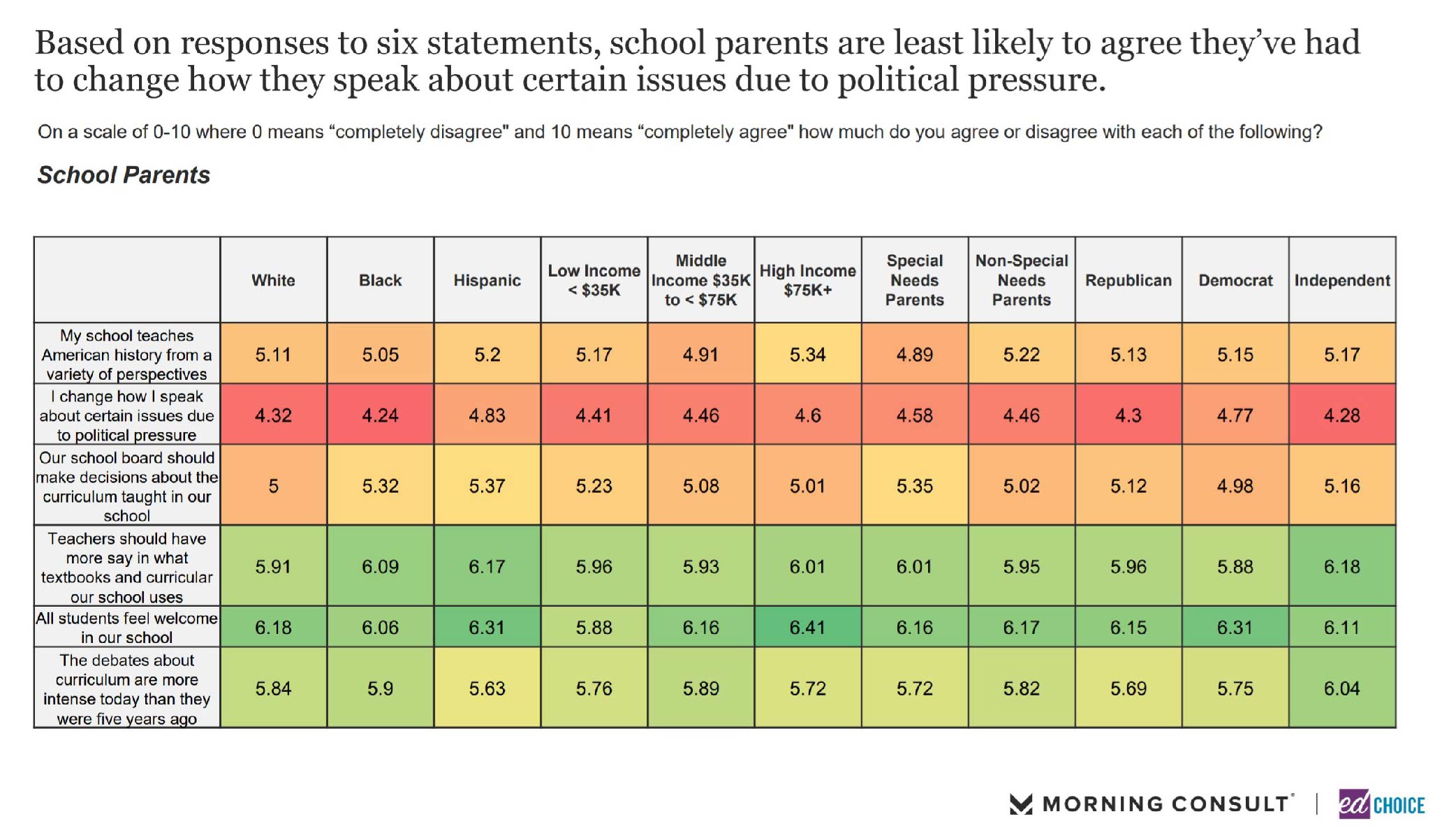
4. Parents think academic and social development are the most important aspects of K-8 education, while skills for future employment and critical thinking are most important for high schoolers. Parents are very likely to say a variety of goals are at least somewhat important for schooling, but the degree of support for those goals differ depending on how old the student is. Based on parents’ responses in June, children in kindergarten through eighth grade should focus most on learning core academic subjects and how to interact with each other. Learning independent thinking skills also ranked especially highly. For high schoolers, parents think the two most important things to learn are skills for future employment and independent thinking. Values and social problems ranked lowest for both K-8 and 9-12 students, largely because parents were more likely to say those areas are “somewhat” rather than “very” or “extremely” important.
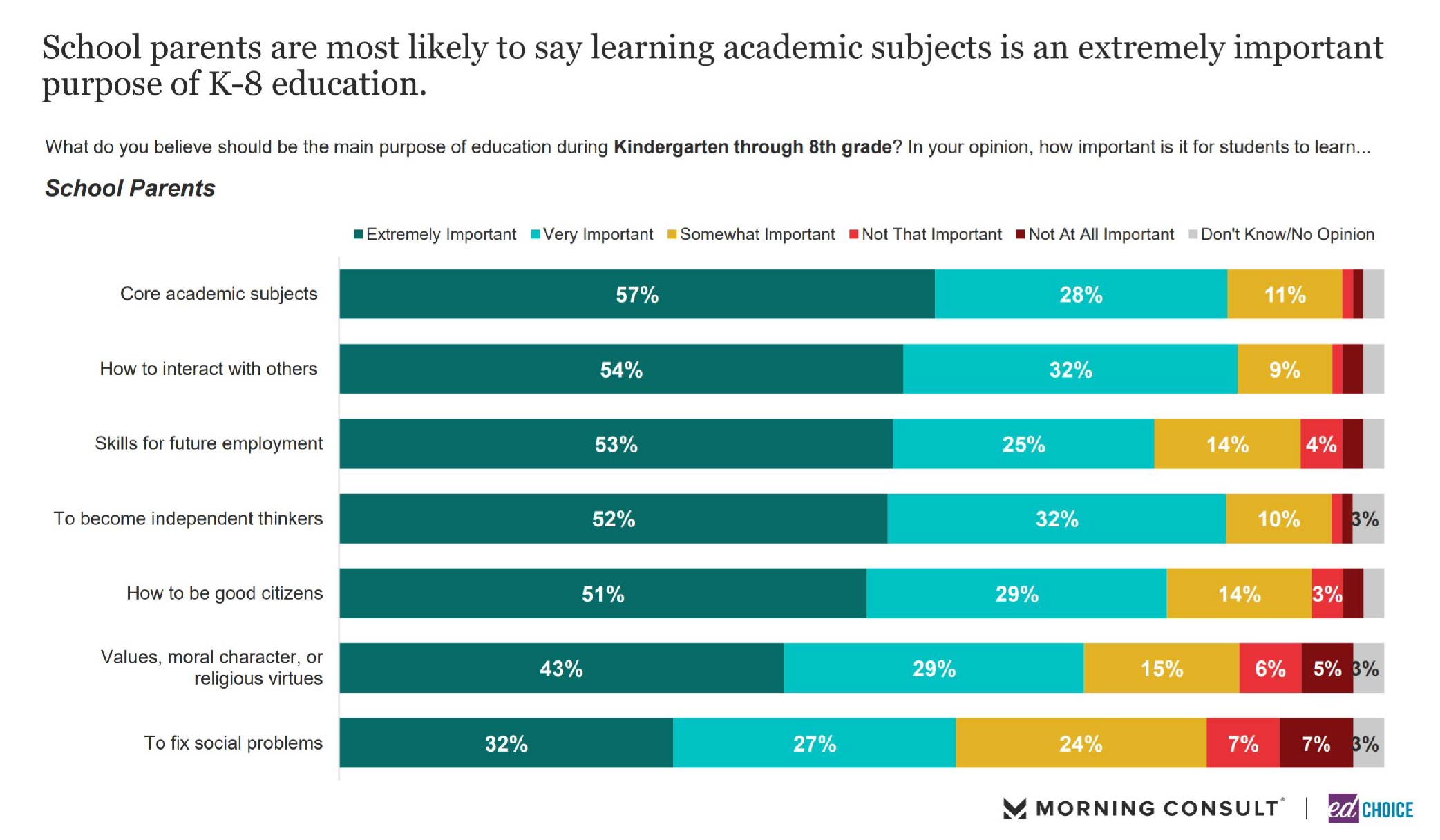

5. Parental support for three major school choice policies has remained rather stable over the last year. In June 75 percent of school parents indicated support for education savings accounts (ESAs), 71 percent for private school vouchers, and 70 percent for charter schools. All three are equal or higher approval ratings to those indicated last July. Soft support for each policy dipped slightly, however.







